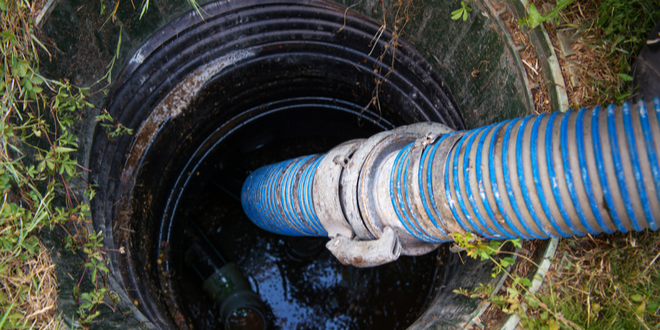By Bob Bowcock
There are approximately 21,800 septic systems within the Chino Basin, many of the systems are concentrated in the unincorporated areas of the region. Inland Empire Utilities Agency (IEUA) provides sewage utility services under the Chino Basin Regional Sewage Service Contract to the following cities: Chino, Chino Hills, Fontana, Montclair, Ontario, Upland, and Cucamonga Valley Water District in Rancho Cucamonga. Unincorporated area property owners pay taxes to IEUA for sewer service yet, remain on septic systems, not permitted to connect to the regional facilities.
Drip-by-drip, septic systems, both failing systems and those that pass inspection, are nurturing an undesirable gang of bacteria, parasites, viruses, nutrients, and other contaminants in local groundwater, streams, and soil locally. The number is unknown because there are few requirements to report the data that would help researchers understand the links between septic waste, failing septic systems, and disease, and fewer studies that trace illnesses back to the source of contamination.
In 2001, major groundwater contamination treatment systems producing over 8 billion gallons of water per year were commissioned to treat contaminated groundwater in the southern portion of the Chino Basin, and to help the Chino Basin Watermaster achieve “hydraulic control” of the Basin to stop the flow of contaminated groundwater into the Santa Ana River.
In 1927, Monte Vista Water District (MVWD) was established to provide water service within the City of Montclair, portions of the City of Chino and the unincorporated San Bernardino County areas in between. At the time, MVWD was charted by the State of California to provide water services and was also permitted to provide sewer services. Recently, MVWD has been asked to provided sewer services by property owners within the unincorporated area. MVWD’s Board of Directors has authorized the necessary studies, engineering and the San Bernardino County Local Agency Formation Commission mandated procedures required to provide the services presently denied. Unfortunately, there are those who seek to weaponize water and sewer services as a means to control potential development activities regionally, outside of their control.
In 2018, IEUA’s Sewer Master Plan was examined to determine which interceptors might be impacted by converting existing septic parcels to sewered parcels. In general, IEUA’s collection system is expected to have more than adequate capacity to convey existing peak wastewater flows for its entire service area. The Sewer Master Plan states that buildout flow projections (year 2060) were developed using population, employment, and land use information. Using the factors in the study indicate that projected buildout flows assume that all existing septic parcels are converted to sewered parcels and generate flow conveyed by the IEUA interceptor system to the wastewater treatment plants.
MVWD should not only be authorized to immediately provide sewer services within its existing jurisdiction boundaries… it should be encouraged and thanked by the entire region.
Bob Bowcock is the Water Resources Manager for Integrated Resource Management, Inc. His prior work includes Water Utility Manager in Azusa and Huntington Park. He was also a team leader for water treatment and distribution systems for various federal branches of government. He is a licensed California Grade V Water Treatment Operator and maintains various other water industry licenses.
Join us June 10 as Bob Bowcock and our expert panel discuss the history of the groundwater contamination, possible solutions and the economic implications of the fix.
 IE Business Daily Business news for the Inland Empire.
IE Business Daily Business news for the Inland Empire.



